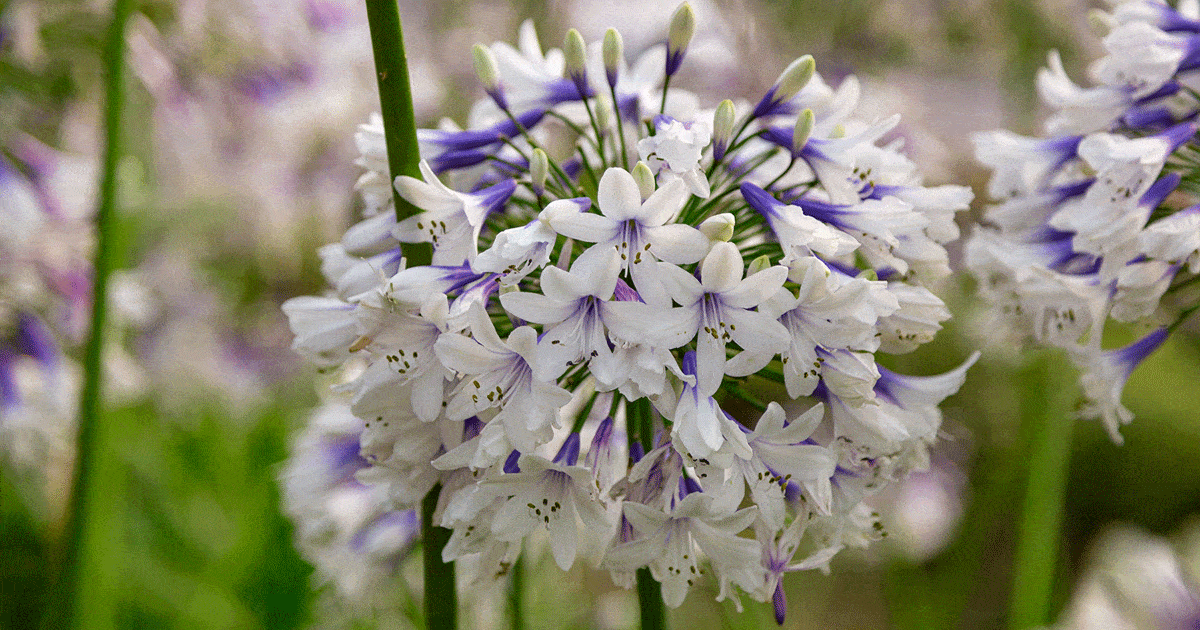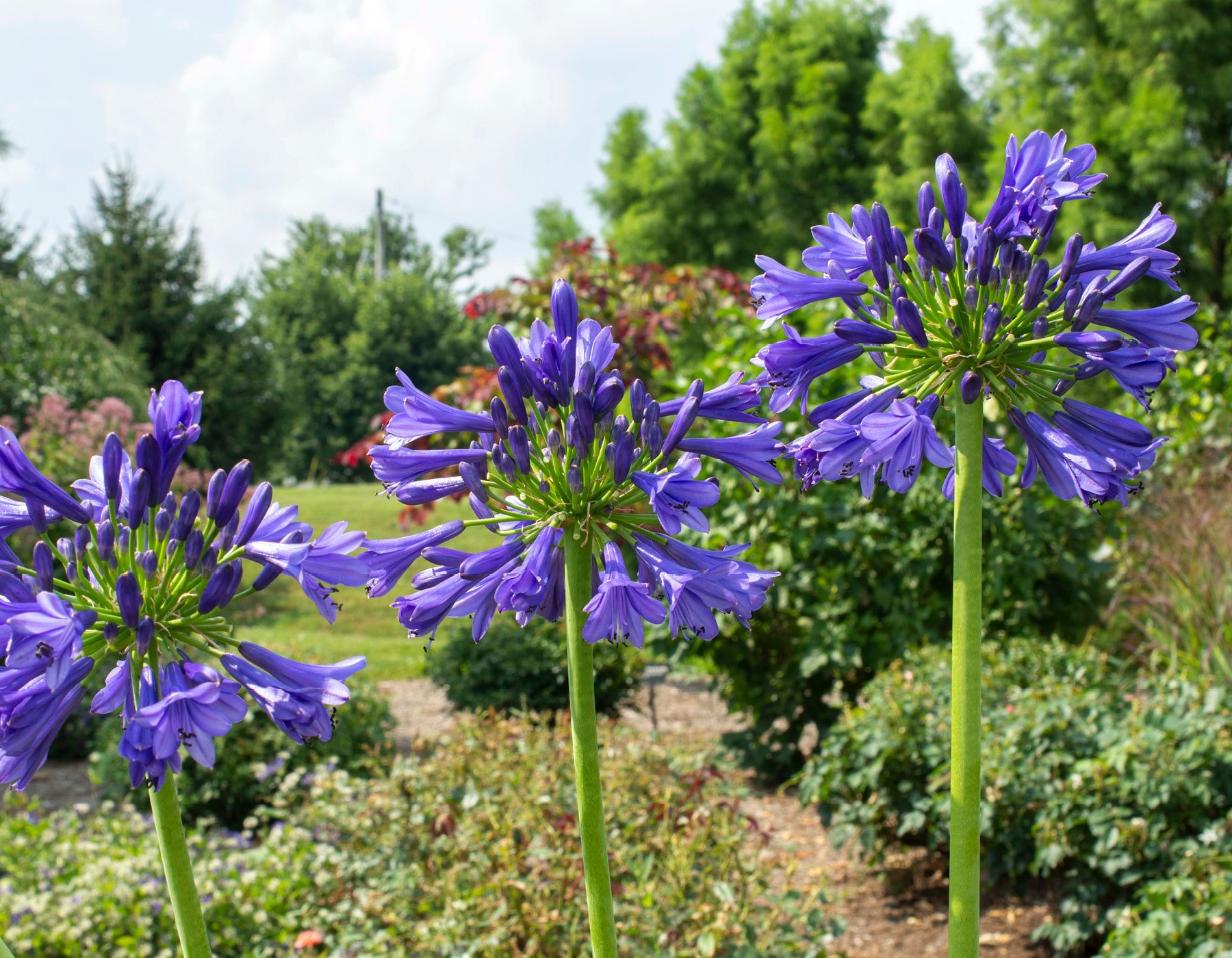Agapanthus Breeding: Tips for Expanding Your Plant Collection
Agapanthus Breeding: Tips for Expanding Your Plant Collection
Blog Article
Unleashing the Secret to Effective Agapanthus Farming: Tips and Tricks for a Flourishing Yard
In the realm of gardening, cultivating agapanthus successfully requires a tactical method that includes numerous elements of plant care. By understanding the nuances of agapanthus growing, one can produce an atmosphere where these plants grow and grow generously.
Planting Agapanthus: Best Practices
When growing Agapanthus, proper soil prep work is important for making certain effective growth and advancement of these gorgeous flowers. Agapanthus, frequently called Lily of the Nile or African lily, prospers in well-draining dirt with a slightly acidic to neutral pH degree - Agapanthus. Prior to growing, it is crucial to amend hefty clay soils with raw material such as compost or peat moss to boost drain and supply essential nutrients for the plants
To plant Agapanthus, choose an area that receives full sunlight to partial color, as this will certainly promote healthy and balanced development and plentiful flowering. Dig an opening twice the diameter of the plant's origin ball and position the Agapanthus at the exact same deepness it was previously growing. Carefully backfill the opening with soil, pushing down firmly to get rid of any air pockets around the origins.
Water the freshly grown Agapanthus extensively and remain to maintain the dirt evenly wet, specifically throughout the plant's energetic expanding season. Agapanthus. Applying a well balanced plant food once a month can additionally support the plant's growth and blooming. By complying with these best techniques for planting Agapanthus, you can produce a spectacular display of these exciting blossoms in your yard
Perfect Soil Issues for Agapanthus
For ideal growth and blooming success of Agapanthus plants, guaranteeing the dirt conditions are suitable is essential. Agapanthus favors soil that is abundant in nutrients, so incorporating a balanced fertilizer throughout the expanding period can advertise healthy development and lively flowers.

Watering and Fertilizing Tips
To make sure healthy growth and vibrant blooms, appropriate watering and feeding techniques are vital for effective Agapanthus farming. Agapanthus plants benefit from normal watering, specifically during the growing season.
When it pertains to feeding Agapanthus, a well balanced fertilizer with equal parts nitrogen, phosphorus, and potassium can be applied in the spring to advertise healthy and balanced development and flowering. Slow-release fertilizers are excellent for providing nutrients progressively over an extensive period. Stay clear of over-fertilizing, as this can cause excessive vegetation development at the expenditure of flowers.
In addition, integrating organic matter like garden compost right into the dirt can boost nutrient degrees and improve soil structure, assisting in the general health and wellness of the Agapanthus plants. By adhering to these watering and feeding ideas, gardeners can guarantee their Agapanthus plants flourish and create sensational screens of blossoms.
Pruning and Deadheading Methods
Proper pruning and deadheading methods play a vital function in keeping the health and aesthetic appeals of Agapanthus plants, complementing the vital methods of watering and fertilizing for successful cultivation. Trimming Agapanthus includes eliminating spent blossom heads, dead or yellowing leaves, and total shaping of the plant to promote better growth. Deadheading, the procedure of removing discolored flowers, not just boosts the Get More Info plant's look yet additionally urges further blooming.
When deadheading Agapanthus, it is suggested to clip off the flower stem at the base using sharp, tidy shears. This process redirects the plant's energy from visit their website seed manufacturing back into root and foliage development, promoting a healthier and more robust plant. Normal deadheading can extend the blooming period of Agapanthus and stop self-seeding, which can cause overcrowding.
In terms of trimming, Agapanthus usually take advantage of a light trim after blooming to clean up the plant and urge fresh development. Cutting down the invested flower stems and eliminating any kind of damaged or dead vegetation assists keep the plant's vigor and overall appearance. Nonetheless, it is important to prevent cutting into the crown of the plant, as this can damage its health and wellness.

Protecting Agapanthus From Vermins and Diseases
Applying efficient insect and illness monitoring approaches is crucial to securing the health and vigor of Agapanthus plants in farming. Agapanthus are normally hardy plants, yet they can still succumb different insects and conditions if not effectively taken care of. One usual bug that affects Agapanthus is the Agapanthus borer, a caterpillar that tunnels right into the plant, creating damages to the fallen leaves and blossoms. To avoid problems, routine assessment of the plants is essential. If borers are detected, they can be manually gotten rid of, or insecticidal soap can be made use of as a control step.
In addition to insects, Agapanthus are prone to conditions such as root rot and fungal fallen leave areas. By remaining attentive and resolving bug and illness problems without delay, garden enthusiasts can assist their Agapanthus grow and flourish.

Verdict
In verdict, successful farming of agapanthus needs proper growing strategies, suitable dirt problems, sufficient watering and feeding, regular pruning and deadheading, and defense from pests and diseases. By adhering to these techniques and ideas, garden enthusiasts can make certain a flourishing yard loaded with gorgeous agapanthus flowers. Agapanthus. Bear in mind to maintain constant care and interest to detail to promote the health and wellness and longevity of these stunning plants
When growing Agapanthus, correct soil prep work is crucial for guaranteeing successful growth and development of these gorgeous flowers.Water the freshly planted Agapanthus thoroughly and proceed to keep the soil evenly damp, particularly throughout the plant's active growing period.For optimum development and growing success of Agapanthus plants, ensuring the dirt problems are suitable site web is critical. When hair transplanting or planting Agapanthus, make certain the soil is well-prepared to give the needed structure for the plants to develop themselves efficiently. One usual bug that influences Agapanthus is the Agapanthus borer, a caterpillar that tunnels into the plant, causing damages to the fallen leaves and blossoms.
Report this page